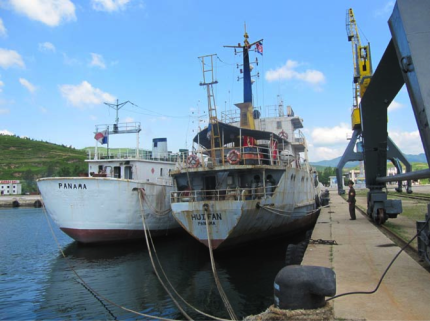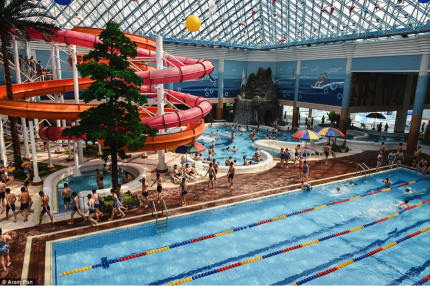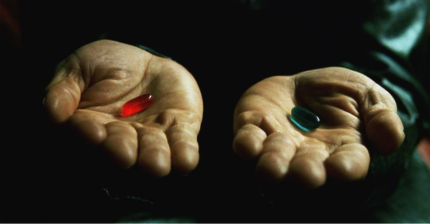This will be the third and final instalment (to better understand the context I encourage you to read Part I and Part II) on a short series of articles on the Democratic Peoples Republic of Korea (DPRK, aka North Korea). For the past three weeks I have argued that, while it may be too early to advise an investment into the country, the time is now right to take a closer look and cast the mainstream narrative aside.
I have long suspected that there is a small but vibrant community of DPRK watchers and investors. This was verified last week, as this series generated more interest than perhaps anything I have previously written. Some truly impressive and adventurous people have contacted us in recent days, and they have made us aware of even more recent events than we had known beforehand. In many ways I feel like I have just taken the proverbial red pill.
Last week we covered some of the geopolitical developments that will soon elevate the DPRK’s importance on the global stage. Russia is driving this change at an accelerating pace due to its ongoing grand strategy, which requires increased influence in Asia and the creation of new markets for its hydrocarbon exports.
Russian President Vladimir Putin has accomplished much during his tenure, but he hopes that his crowning achievement and legacy will be the rebuilding of the Soviet Union. Responses from former satellite countries imply that there is little interest in a political – let alone ideological – alliance, but a combination of economic incentives (debt forgiveness) and thinly veiled threats (Georgia 2008, Ukraine 2014) appear to be paying dividends.
Recent actions indicate that Russia hopes to renew the DPRK’s economic dependency. Included in last month’s USD 10bn debt write-off was a requirement to direct 10% of the principal toward infrastructure development near the northern ports of Rajin and Sonbong (now referred to with the merged term of RaSon port). Rajin carries the strategic benefit of being only 160km from Vladivostok, but is (relatively) warm-water and is the northernmost port on the Asian coast that operates year-round.
Everyone in the region wants access to Rajin and the geopolitical stakes here are significant:
- Russia: Access to Rajin would facilitate year-round shipping into eastern Russia. The newly-built rail link connecting Khasan to Rason, if extended into South Korea, would impart all the game-changing benefits mentioned last week.
- Mongolia: Landlocked, and therefore its export options are limited amidst the resource extraction boom that will supposedly begin in the next couple of years (assuming the Mongolian government eventually gets out of its own way). Mongolia is the DPRK’s closest ally and very much wants access to Rason.
- China: Rason is of critical importance, which is why the Chinese are building and investing so much in the area. China imports enormous amounts of coal from Australia, and the ability to import into Rason and transfer to rail would improve the economics for shipment into Northern China. Seven of the world’s ten busiest ports are located in China.
For exports, Rajin lies 900 nautical miles closer to the US West Coast than any of the Northern Chinese ports to include Dalian and Qingdao. Assuming Western importers ever accept the practice, the use of Rason as a container export port for Northern China would be a game-changer.
Skeptics will note that speculation over Rason’s importance and development has been rife since the Soviet Union’s collapse in 1991, and yet the Kim regime has never invested in, nor sought foreign investment into, the region. While it is certainly true that hopes of a DPRK economic renaissance have been repeatedly dashed, we have recently seen indicators that real and substantial change is coming to the country:
Russia is investing in Rason port
Note the earlier mentioned debt forgiveness. Additionally, the Russian government just sent four 400-tonne cranes to Rajin and is investing USD 66 million into a dock that they leased from the North Koreans. With the rail link to Khasan already completed, Russia will soon have access to a Pacific warm-water port and is in the early stages of a significant upgrade. Additional work includes the reconstruction of three tunnels, the repair of a bridge over the Tumen river, and the construction of a freight terminal in Rajin port that will upgrade its capacity beyond the current level of 4 million tonnes per year.
 Rajin is about to receive a much-needed upgrade
Rajin is about to receive a much-needed upgrade
Foreign trade is increasing. Recent reports confirm that foreign trade with its neighbors has increased rapidly in the past five years (2011 exports to South Korea at USD 5.6bn, +284% from 2007; 2011 exports to China at USD 2.5bn, +424% from 2007). These numbers seem microscopic but must be taken in context of a country with estimated 2012 GDP of USD 40 billion. (Source: Statistics Korea)
North Korea’s foreign investment laws are surprisingly progressive
We have been surprised at the number of responses we have received from people who are currently or formerly active within North Korea. What surprised us even further were the nearly universal comments that foreign investment laws in the country are user-friendly.
One gentleman has traveled in and out of the DPRK since the late 90s and commented that – at least on paper – the laws are both straightforward and permissive. (His experiences, which are fascinating and will fill a future column, were that laws on paper most definitely did not equate with laws on the ground). For further details I encourage you to check out the Kimchi Law Blog, a fascinating (if legal research can be described as such) dive into North Korean investment law.
More visitors are reporting that the ground truth clashes with the media narrative
We have read dozens of trip reports that overturn our expectations of the DPRK as starvation-ridden wasteland. In the interests of time I will leave you with just two.
One of our more interesting contacts is a Canadian entrepreneur, Randal Eastman, who has lived in Shanghai for the past 15 years. He runs a chain of spas in China, and is actively involved in the Rotary Club as he works to promote it within China and North Korea. From Randal:
I have been a bit quiet in recent months with DPRK project pursuits but I would like to do more and see a whole nation that needs to be rebuilt. It is frustrating to have been witness to the “one step forward – two steps back” international relations of this country, but I just want to leave you with one thought that popped up in my head in January when I was there – it just seemed “normal” finally.
People were running around to and fro. The new Beijing taxis were waiting in front of shops (conveniently) to take people home. People were frequenting pubs and restaurants during the week. In fact we almost could not get into the Italian restaurant I had visited on my previous visit on a Monday night – because it was packed for a wedding. In the end we got a table in a room with a family out just for a social dinner with karaoke. Normal people – not high-level officials. And since the washroom was upstairs I managed to crash the wedding and was overwhelmed by the friendly curiosity of the family members. The groom’s brother was in military uniform and he ran up to speak English to me. The grandmother near the entrance smiled at me. The groom’s colleagues from university ran up to take photos and the wedding photographer was frantically snapping away. The feeling was just the same as I felt in 1990 on the street in Vladivostok. These are people just like us who want the same thing – a better future for their family. Full stop.
Plus take-away pizza. We didn’t waste a slice.
Another interesting account comes from Aram Pan, a Singaporean photographer who has published some amazing photos of his numerous trips to Pyongyang and the surrounding countryside. You can see his website here and recent media coverage here (Daily Mail). These photos are startling only in their normalcy – one might be forgiven for believing they were taken in any working-class Asian city.
 Courtesy of Aram Pan (as seen in the Daily Mail)
Courtesy of Aram Pan (as seen in the Daily Mail)
Again, skeptical readers might believe these gentlemen to be exposed to government-run Potemkin villages, or ‘useful idiots’ who support the regime. Here is Mr Pan’s response to these suggestions:
Coming back from my second trip, many things still puzzle me. I’ve travelled from Pyongyang to Hyangsan to Wonsan to Kumgangsan, to Kaesong and back. The things I’ve seen and photographed tell me that the situation isn’t as bad as I thought.
People seem to go about their daily lives and everything looks so incredibly normal. Some of my friends tell me that everything I’ve seen must be fake and all that I’ve photographed are a massive mock up.
But the more I think about that logic, the more it doesn’t make any sense… would anyone mock up miles and miles of crops as far as my eyes can see and orchestrate thousands of people to seemingly go about their daily lives?
Of course these accounts must be contrasted with the unimaginable suffering, isolation and trauma that many North Koreans have been subjected to. Other sources tell us that Pyongyang remains a bubble for the favored elite, surrounded by penury in the countryside (though that bubble is reportedly expanding). This article is not intended to be a sales pitch – our goals have been met if we can simply persuade the reader to begin to question what they have been fed via the BBC, CNN and other ‘news’ outlets over the years.
Communications with the outside world are improving
By now most of us have seen the famous satellite photo of North Korea at night, which contrasts the bright lights of South Korea and China with the pitch-black void north of the DMZ. It is universally agreed that North Korea’s electrical grid is among the world’s worst, and will require significant infrastructure expenditure to reach minimally sustainable levels.
Lack of access to reliable electric generation creates many problems for North Koreans, yet in recent years the country has made great strides in telecommunications and now boasts mobile penetration rates of 80%, which compare favorably with many other frontier markets. The local telecoms firm, Koryolink (a joint venture between Egypt’s Orascom and the DPRK government) has offered 3G service in North Korea since 2008. Compare that to Iraq and Libya, where 3G remains inaccessible even today. As of last year Koryolink had realized profit margins of 80%, and surpassed 2 million subscribers in a country of 24 million people.
Active investments are coming online in the DPRK
As of 2013, there were 138 Chinese companies registered as doing business in North Korea. Of these, 41 are engaged in resource extraction. Possibly the most interesting is the Emperor Hotel and Casino, a Hong Kong-owned casino near Rason.
Gambling is outlawed in North Korea (and mainland China) but the Emperor caters to Chinese tourists – with a USD 500 buy-in and minimum bets of USD 50 they are apparently catering to high-rollers.
Economic sanctions mean that finding direct exposure to the DPRK in the public markets is a nearly impossible task. HBOil JSC, a Mongolian company, fits that role. HBO is an oil trading and refining company that has reported it owns 20% of the DPRK state-owned entity that operates a large refinery in North Korea’s Seungri province and a 200 kW power station in Rason. The company will supply petroleum products to Seungri and claims to be in full compliance with international sanctions (which, as we discussed last week, are not as draconian as one might believe). HBOil’s underwriter, BDSecurities JSC, has written a fascinating research report on the HBO opportunity.
Other companies that currently operate in North Korea have recently come to my attention and I intend to write more about those in the near future.
In summary, the information that I have shared in the past three weeks is a small sample of what I have been exposed to in my dive down the rabbit hole since I developed an interest in North Korea. If after reading this, a small percentage of your skepticism toward the DPRK has been replaced with curiosity then I have achieved my desired goal. As earlier stated, these articles are not meant to encourage investment in North Korea, or even to paint a rosier picture than what actually exists, but rather to generate an uptick in interest toward a country where perceptions rarely match reality.
It is quite likely that my next missive on the DPRK will be a trip report. I hope that you have enjoyed this series of articles, and will tune in for the next one. Until then, safe travels.
– Kevin
“Well, that is very imperative to let North Korea open door to outside.” – Kim Dae Jung
(Disclosure: I do not, either personally or through my own firm, own shares in any of the investments mentioned in this article at time of this writing.)




This Post Has One Comment
This is absolutely fascinating. I work at a financial research publishing company called Wyatt Investment Research. Our team has been covering a lot of emerging markets lately but never North Korea… I will have to pass this on to my colleagues.
Thanks for sharing!